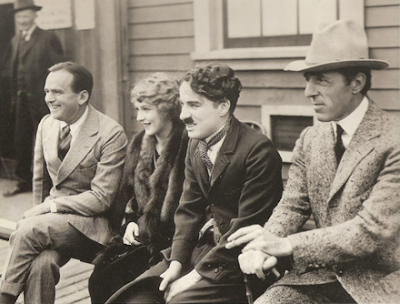
what is world cinema?
A term used in English speaking countries to refer to films or film industries of non-English speaking countries.
1895-1918:The World Discovers a New Art Form
Filmmakers
Thomas A.edison
He developed many devices that greatly influenced life around the world, including the phonograph , the motion picture camera , and a long-lasting, practical electric light bulb .Edison's film studio made close to 1,200 films.The majority of the productions were short films showing everything from acrobatics to parades to fire calls including titles such as Fred Ott's Sneeze (1894), The Kiss (1896), The Great Train Robbery (1903), Alice's Adventures in Wonderland (1910), and the first Frankenstein film in 1910.
The Lumière brothers
The Lumière brothers, Auguste Marie Louis Nicolas (19 October 1862, Besançon , France – 10 April 1954, Lyon ) and Louis Jean (5 October 1864, Besançon , France – 6 June 1948, Bandol ), were the first filmmakers in history.The moving images had an immediate and significant influence on popular culture with literally, "the arrival of a train at La Ciotat", but more commonly known as Arrival of a Train at a Station and Drawing out the coke.
Their actuality films , or actualités , are often cited as the first, primitive documentaries .They also made the first steps towards comedy film with the slapstick of L'Arroseur Arrosé .
The Lumière brothers, Auguste Marie Louis Nicolas (19 October 1862, Besançon , France – 10 April 1954, Lyon ) and Louis Jean (5 October 1864, Besançon , France – 6 June 1948, Bandol ), were the first filmmakers in history.The moving images had an immediate and significant influence on popular culture with literally, "the arrival of a train at La Ciotat", but more commonly known as Arrival of a Train at a Station and Drawing out the coke.
Their actuality films , or actualités , are often cited as the first, primitive documentaries .They also made the first steps towards comedy film with the slapstick of L'Arroseur Arrosé .
Georges Méliès
Georges Méliès, (8 December 1861 – 21 January 1938), was a French illusionist and filmmaker famous for leading many technical and narrative developments in the earliest days of cinema.Méliès, a prolific innovator in the use of special effects , accidentally discovered the substitution stop trick in 1896, and was one of the first filmmakers to use multiple exposures , time-lapse photography , dissolves , and hand-painted color in his work.Because of his ability to seemingly manipulate and transform reality through cinematography , Méliès is sometimes referred to as the first "Cinemagician".His films include A Trip to the Moon (1902) and The Impossible Voyage (1904), both involving strange, surreal journeys somewhat in the style of Jules Verne , and are considered among the most important early science fiction films , though their approach is closer to fantasy .Méliès was also an early pioneer of horror cinema , which can be traced back to his The Haunted Castle (1896).
Gloria May Josephine Swanson
Gloria May Josephine Swanson ( March 27, 1899 – April 4, 1983) was an American actress, singer, and producer perhaps best known for her role as Norma Desmond, a reclusive silent film star, in the critically acclaimed 1950 film, Sunset Boulevard .She was one of the most prominent stars during the silent film era as both an actress and a fashion icon, especially under the direction of Cecil B. DeMille .She starred in dozens of silent films and was nominated for the first Academy Award in the Best Actress category.She also produced her own films, including Sadie Thompson and The Love of Sunya . In 1929, Swanson transitioned to talkies with The Trespasser . Personal problems and changing tastes saw her popularity wane during the 1930s when she moved into theater and television.


David Llewelyn Wark "D. W." Griffith
David Llewelyn Wark "D. W." Griffith (January 22, 1875 – July 23, 1948)was an American film director, mostly remembered as the director of the 1915 film The Birth of a Nation and the subsequent film Intolerance (1916).He is closely associated with his frequent leading lady, Lillian Gish.
Griffith began making short films in 1908, and released his first feature , Judith of Bethulia , in 1913. His film The Birth of a Nation made pioneering use of advanced camera and narrative techniques, and its immense popularity set the stage for the dominance of the feature-length film in the United States.Since its release, the film has been highly controversial for its negative depiction of African Americans and glorification of the Ku Klux Klan .
Several of Griffith's later films, including Broken Blossoms (1919), Way Down East (1920) and Orphans of the Storm (1921) were also successful, but his high production, promotional, and roadshow costs often made his ventures commercial failures. By the time of his final feature, The Struggle (1931), he had made roughly 500 films. For his pioneering techniques and early understanding of cinema, Griffith is considered among the most important figures in the history of the medium.
















没有评论:
发表评论